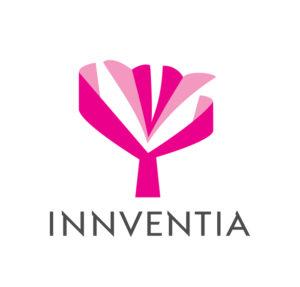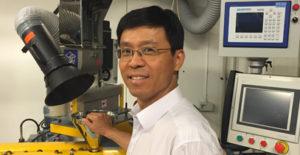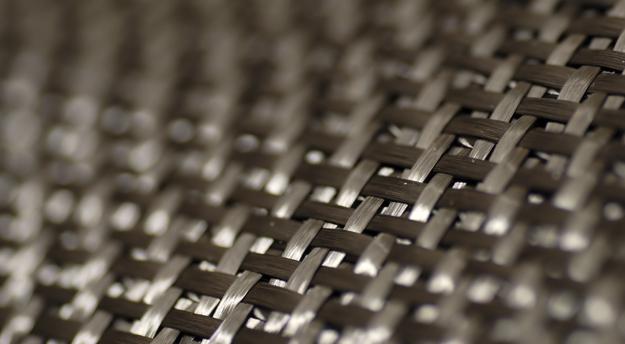Innventia Heads up the AMPOFORM Project to Manufacture 3D Printed Prostheses Using Organic Materials
 The Swedish Ministry of Enterprise and Innovation tasked their innovation agency Vinnova to assemble a group of European companies to develop new, low cost, biodegradable materials for customized prosthetic and assistive devices. Heading up the project will be world-leading research institute Innventia, which uses research, technology and materials based on forest raw materials to develop new products. Together with four other EU companies, Innventia will work on a joint project to develop the technology, materials and processes for quick and affordable 3D printing prosthetic devices using their expertise in all-natural materials. The interdisciplinary project will be called AMPOFORM (Additive Manufacturing of Prosthetic products based on Forest Raw Materials), and will require leveraging both the chemistry of bio-based materials and 3D printing technology.
The Swedish Ministry of Enterprise and Innovation tasked their innovation agency Vinnova to assemble a group of European companies to develop new, low cost, biodegradable materials for customized prosthetic and assistive devices. Heading up the project will be world-leading research institute Innventia, which uses research, technology and materials based on forest raw materials to develop new products. Together with four other EU companies, Innventia will work on a joint project to develop the technology, materials and processes for quick and affordable 3D printing prosthetic devices using their expertise in all-natural materials. The interdisciplinary project will be called AMPOFORM (Additive Manufacturing of Prosthetic products based on Forest Raw Materials), and will require leveraging both the chemistry of bio-based materials and 3D printing technology.
Current methods of manufacturing prostheses and other assistive devices require the consumption of fossil fuel-based materials, including thermoplastics and carbon fiber. The complicated and labor intensive manufacturing process requires a high rate of expertise and experience, which involves large investments in time and money. The intention of the AMPOFORM project is to simplify the manufacturing of prostheses so both technicians and patients can save time and money. Additionally, the use of 3D printing technology allows for individual customization without increasing those costs. The low cost of these prostheses, and the use of green materials, will lead to improved patient satisfaction and reduce environmental impact.
“Our goal is to combine 3D printing with cellulose-based materials for additive manufacturing of prostheses. Through this, we will bring together both materials and technology that are at the forefront of development, something that is an exciting challenge. At the same time, we want to create a new value chain for healthcare, with various businesses working together on several fronts. With this project, we want to contribute to the long-term sustainability of the public healthcare sector,” explained Li Yang, Innventia’s project manager in graphic technology and optical calibration.
The group expects to derive their 3D printing materials primarily from nanocellulose and carbon fiber sourced from lignin, the complex polymer that forms the support tissues of vascular plants. The material is especially important to the rigidity and water resistance of cell walls in bark and hard woods, which prevents rot and allows for a high rate of structural stability. Because these natural materials are strong and durable, and the process of additive manufacturing consumes less resources, they will provide significant economic benefits over traditional materials. Combined with the reduction in production time, the use of these materials in the process of manufacturing prosthetic devices can reduce costs by up to 50%.
“The use of bio-based materials in 3D printers also opens up the possibility of other products that were previously impossible or too expensive to manufacture in the traditional manner. Our vision is for Sweden to become a global leader in additive manufacturing in the long term. Improving the properties of 3D structures is one of the challenges of the project. We will also evaluate both the 3D-printer technology and the production process and marketing requirements within the healthcare sector,” continued Yang.
Innventia is joined in the AMPOFORM project by four other companies with extensive experience using biological and environmentally friendly materials, the development of 3D printing technology and the manufacturing of prostheses and orthotics. Stora Enso is a Finnish pulp and paper manufacturer, Wematter offers expert 3D printing services to Sweden, Fillauer Europe develops next generation prosthetics, and the Region Örebro County University Hospital specializes in orthotics. The total budget for the project is 11 million SEK (About $1.3 million), with 44% being provided by Vinnova. Discuss these plans further over in the APOFORM to Use 3D Printing forum at 3DPB.com.
Subscribe to Our Email Newsletter
Stay up-to-date on all the latest news from the 3D printing industry and receive information and offers from third party vendors.
You May Also Like
3D Printing Financials: Fathom Struggles in Financial Quicksand During Critical Transition
Facing a year of key transitions and financial pressures, Fathom (Nasdaq: FTHM) has filed its annual report for 2023 with the U.S. Securities and Exchange Commission (SEC). The document outlines...
Latest Earnings Overview for Australian 3D Printing Firms Titomic and AML3D
Australian 3D printing manufacturing firms Titomic (ASX: TTT) and AML3D (ASX: AL3) reported their financial results for the period from July to December 2023, marking the first half of their...
3D Printing Webinar and Event Roundup: April 7, 2024
Webinars and events in the 3D printing industry are picking back up this week! Sea-Air-Space is coming to Maryland, and SAE International is sponsoring a 3D Systems webinar about 3D...
3D Printing Financials: Unpacking Farsoon and BLT’s 2023 Performance
In the Chinese 3D printing industry, two companies, Farsoon (SHA: 688433) and Bright Laser Technologies, or BLT (SHA: 688333), have recently unveiled their full-year earnings for 2023. Farsoon reported increases...

































